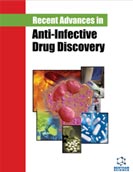Abstract
The development of ideal, secure, efficient, non-invasive drug delivery
systems is now a top priority in this field of drug delivery. Nanoparticles are being
employed more frequently for effective medication delivery, exerting the desired
therapeutic effect at the expected site of action with the least amount of activity or
volume loss. Size, surface chemistry, biological destiny, toxicity, in vivo dispersion,
and targeting capabilities all play a role in these systems. The stability and interactions
of nanoparticles with cells are regulated by their surface chemistry, and they can access
a greater variety of targets. The development of nano-drug delivery systems has opened
up new avenues for the treatment and prevention of disease, as well as for enhancing
pharmacological properties, enhancing targeting, overcoming drug resistance, and
lowering immunogenicity and toxicity. This chapter will first discuss the desirable
characteristics of an effective drug delivery system and will cover recent developments
in nano drug delivery systems used in clinical research, including dendrimers, solid
lipid nanoparticles, nanogels, nanoemulsions, polymeric micelles, and polymer
nanofibers.






















